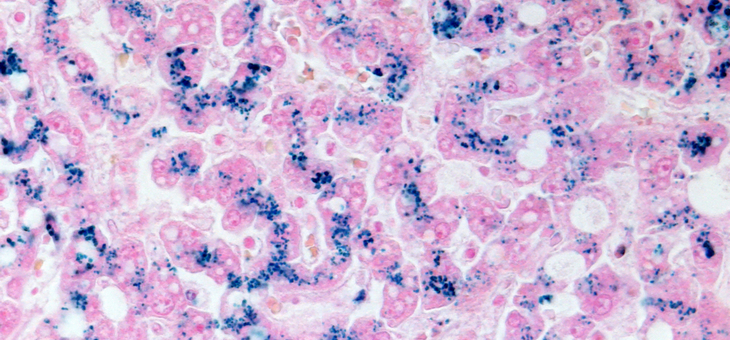Are you tired all the time? Do you have aching joints? Pains in your tummy after eating?
You may have haemochromatosis.
Haemochromatosis is Australia’s most common genetic disorder. It is easily managed but can have dire consequences if left untreated. The condition causes your body to absorb too much iron – up to four times the amount that is considered normal.
Over time, the accumulated iron can cause damage to joints, organs and other parts of the body, and even lead to premature death.
Fatigue is a common symptom. This occurs because the build-up of iron affects the brain’s capacity to regulate sleep. You may have trouble going to sleep at night and find it especially difficult to get up in the morning. Long-term sleep issues can then lead to other health problems.
Muscle weakness is also a common side effect. The oversupply of iron in the blood damages muscles and this can be irreversible if the condition is not treated. Sufferers might have trouble walking up stairs or carrying a heavy bag of groceries.
One of the most debilitating symptoms, according to WebMD, is abdominal pain, usually in the upper abdomen and especially after eating. A warm wheat bag may help while the condition is being managed.
The build-up of iron can also affect the organs, especially the pancreas and liver. The pancreas regulates blood sugar levels and if it is unable to function properly, diabetes can develop. The liver removes chemicals and toxins from the blood. When liver function becomes impaired, the consequences can be deadly, WebMD reports.
Other conditions that can develop include: erectile dysfunction, because the brain is no longer able to send signals to the muscles that allow for blood flow into the penis; arrhythmia, or the irregular beating of the heart, and heart failure, if arrhythmia becomes severe.
But the good news is that haemochromatosis is usually easily managed. Haemochromatosis Australia says that an easy and simple treatment involves venesection, which is, in effect, a regular blood donation at blood banks to lower your iron levels – and help other Australians.
Haemochromatosis Australia says: “Up to 500ml of blood is removed at regular intervals until the iron levels in the blood return to within the normal range. This can take up to 18 months, with weekly or sometimes twice-weekly venesections, depending on the original iron levels of the patient.
“Once normal levels of iron are re-established, venesections are used less frequently (three or four times a year) to maintain those levels throughout the patient’s lifetime.”
Do you have haemochromatosis? Have you been able to manage the condition? Was it difficult to get a diagnosis?
Related articles:
Is it tiredness or sleep apnoea?
Do you have heart risk factors?
Warning signs of a blood clot
Disclaimer: This article contains general information about health issues and is not advice. For health advice, consult your medical practitioner.

